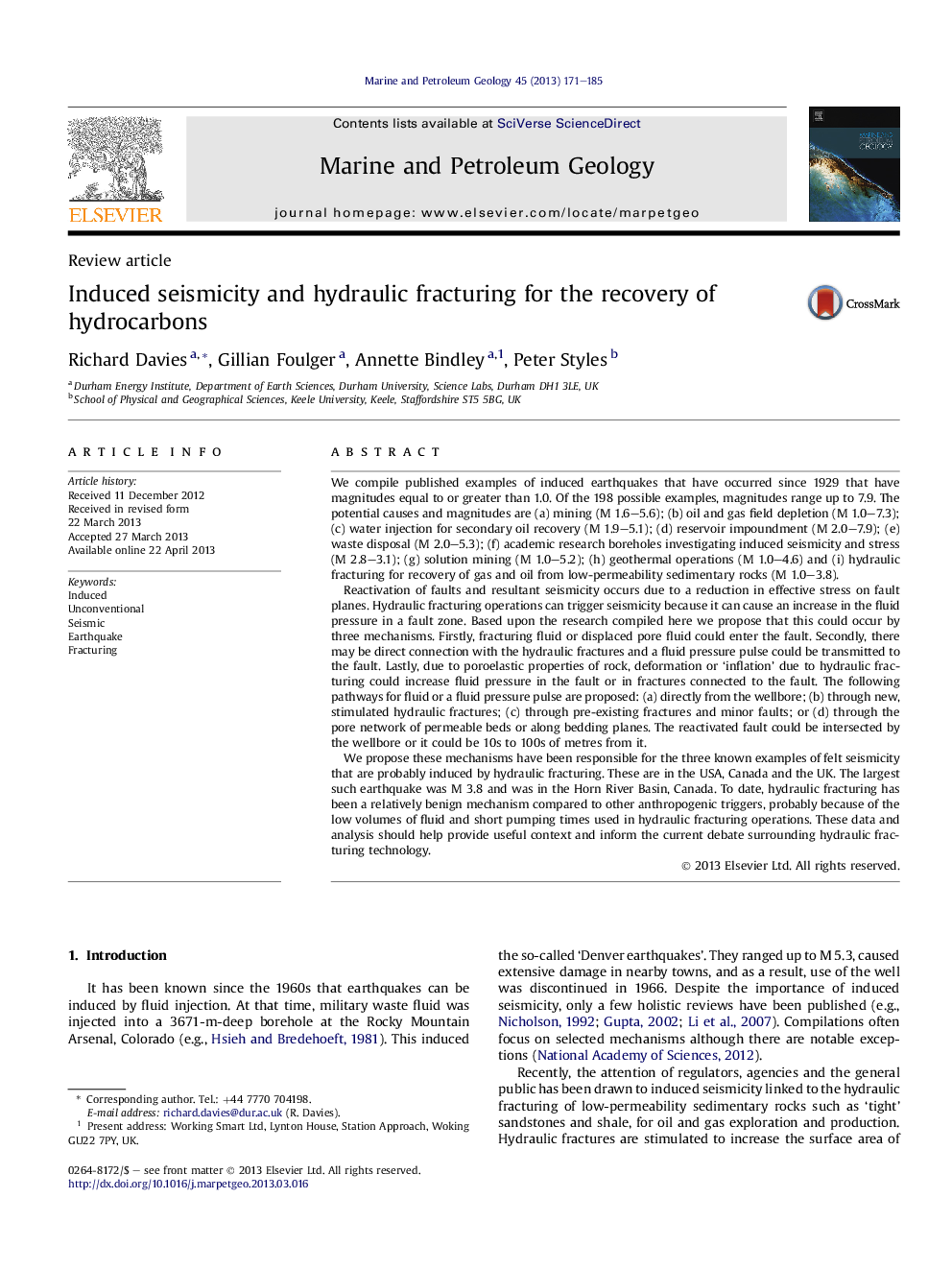| کد مقاله | کد نشریه | سال انتشار | مقاله انگلیسی | نسخه تمام متن |
|---|---|---|---|---|
| 6435475 | 1637179 | 2013 | 15 صفحه PDF | دانلود رایگان |
- Hydraulic fracturing is not an important mechanism for causing felt earthquakes.
- Fault reactivation due to hydraulic fracturing is well known and readily detected.
- Hydraulic fracturing will probably induce felt seismicity in the future.
We compile published examples of induced earthquakes that have occurred since 1929 that have magnitudes equal to or greater than 1.0. Of the 198 possible examples, magnitudes range up to 7.9. The potential causes and magnitudes are (a) mining (M 1.6-5.6); (b) oil and gas field depletion (M 1.0-7.3); (c) water injection for secondary oil recovery (M 1.9-5.1); (d) reservoir impoundment (M 2.0-7.9); (e) waste disposal (M 2.0-5.3); (f) academic research boreholes investigating induced seismicity and stress (M 2.8-3.1); (g) solution mining (M 1.0-5.2); (h) geothermal operations (M 1.0-4.6) and (i) hydraulic fracturing for recovery of gas and oil from low-permeability sedimentary rocks (M 1.0-3.8).Reactivation of faults and resultant seismicity occurs due to a reduction in effective stress on fault planes. Hydraulic fracturing operations can trigger seismicity because it can cause an increase in the fluid pressure in a fault zone. Based upon the research compiled here we propose that this could occur by three mechanisms. Firstly, fracturing fluid or displaced pore fluid could enter the fault. Secondly, there may be direct connection with the hydraulic fractures and a fluid pressure pulse could be transmitted to the fault. Lastly, due to poroelastic properties of rock, deformation or 'inflation' due to hydraulic fracturing could increase fluid pressure in the fault or in fractures connected to the fault. The following pathways for fluid or a fluid pressure pulse are proposed: (a) directly from the wellbore; (b) through new, stimulated hydraulic fractures; (c) through pre-existing fractures and minor faults; or (d) through the pore network of permeable beds or along bedding planes. The reactivated fault could be intersected by the wellbore or it could be 10s to 100s of metres from it.We propose these mechanisms have been responsible for the three known examples of felt seismicity that are probably induced by hydraulic fracturing. These are in the USA, Canada and the UK. The largest such earthquake was M 3.8 and was in the Horn River Basin, Canada. To date, hydraulic fracturing has been a relatively benign mechanism compared to other anthropogenic triggers, probably because of the low volumes of fluid and short pumping times used in hydraulic fracturing operations. These data and analysis should help provide useful context and inform the current debate surrounding hydraulic fracturing technology.
Journal: Marine and Petroleum Geology - Volume 45, August 2013, Pages 171-185
